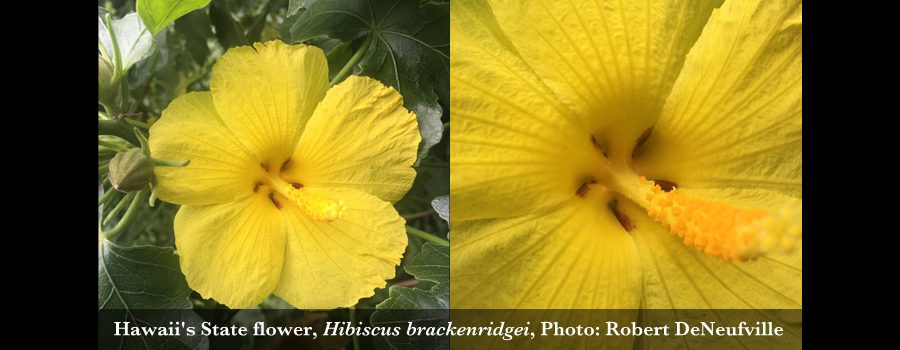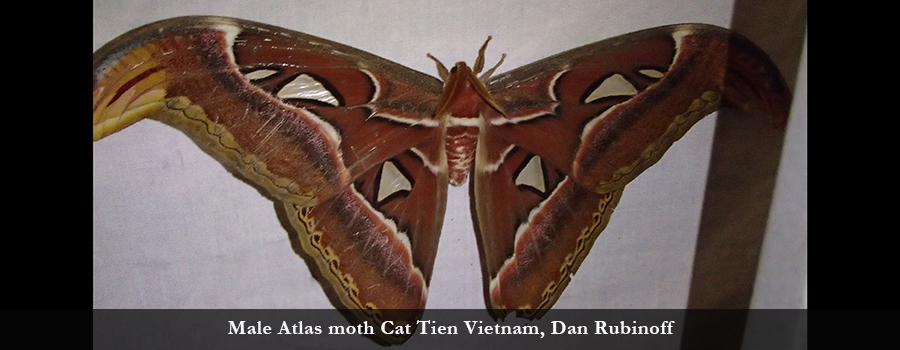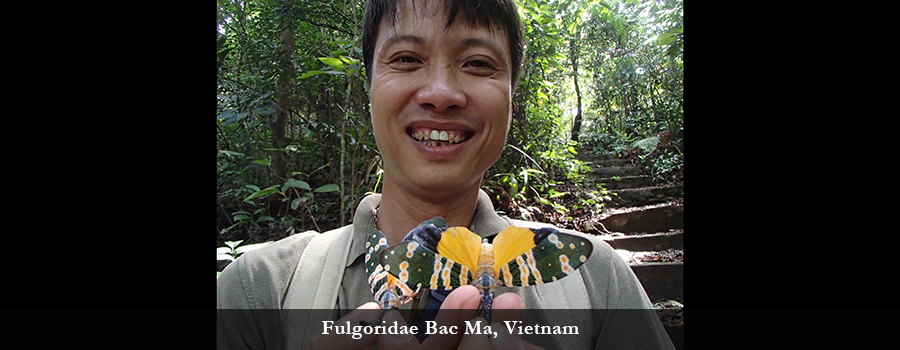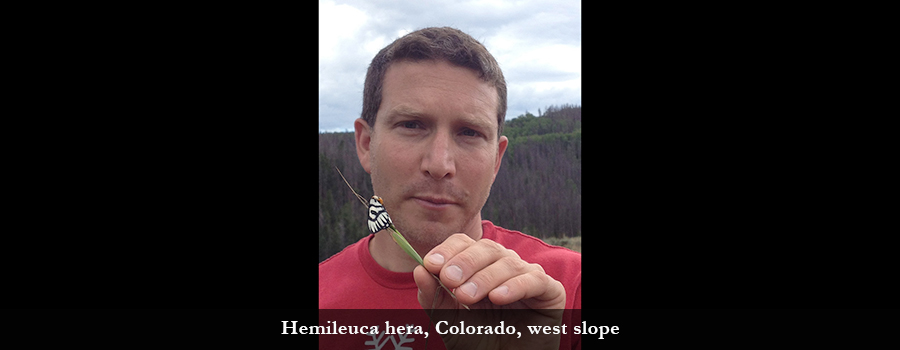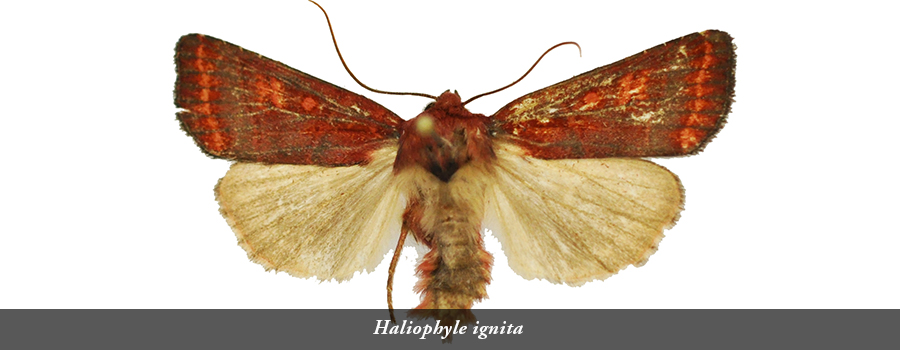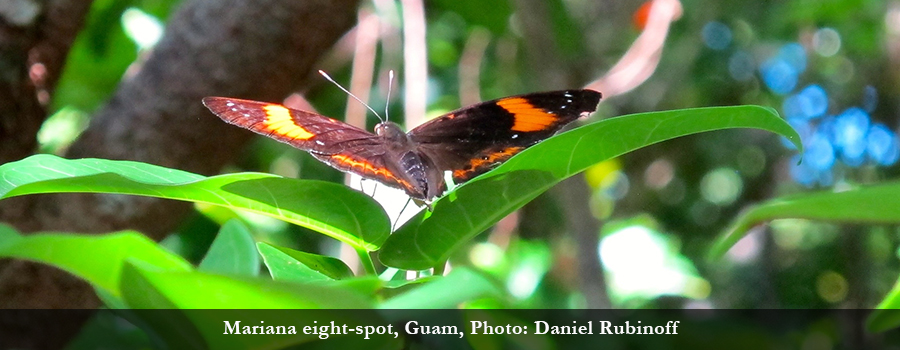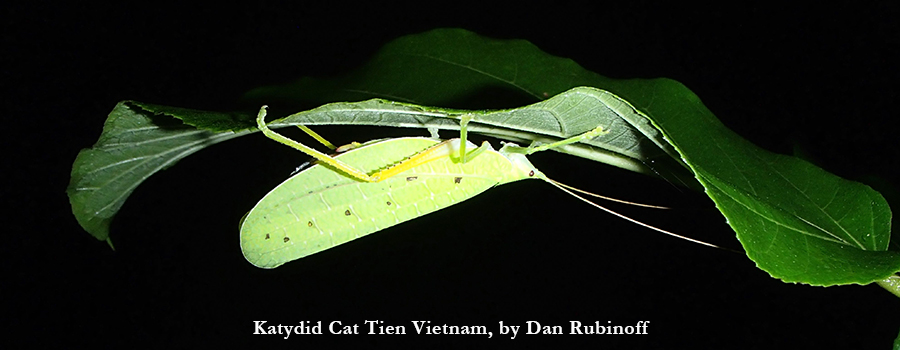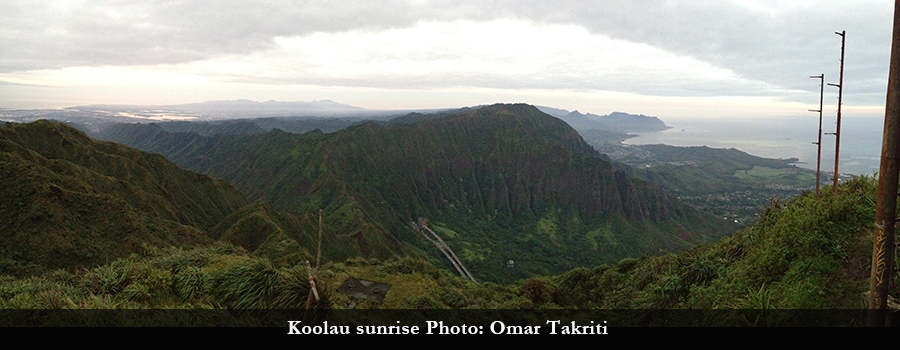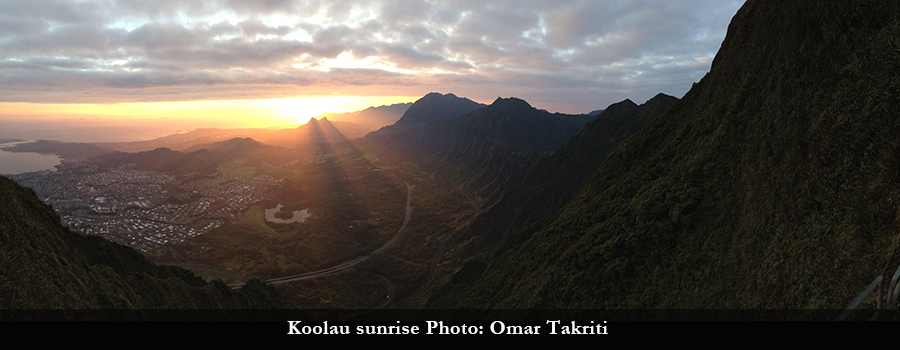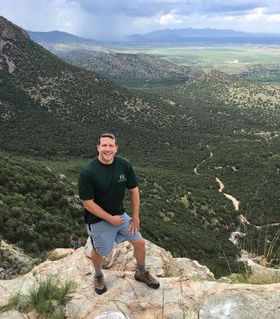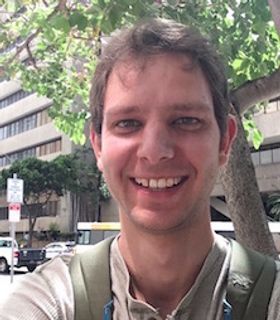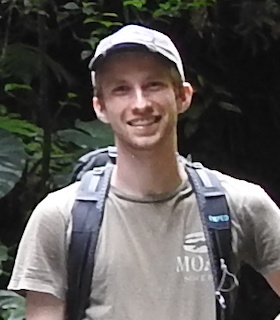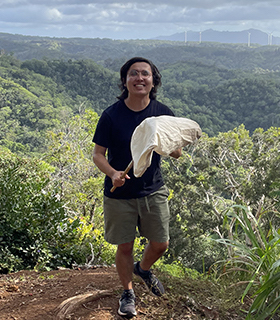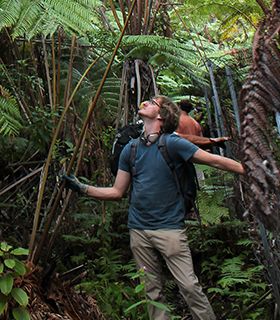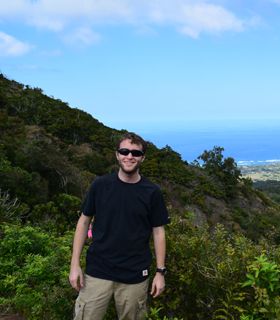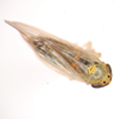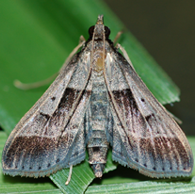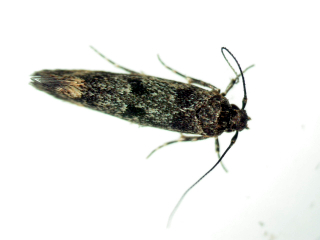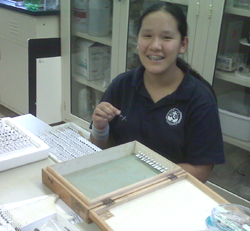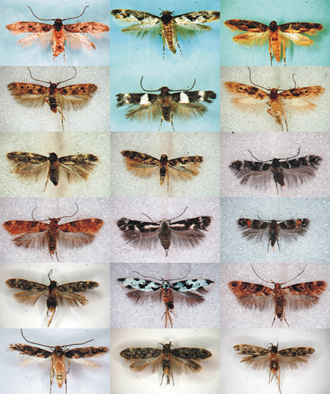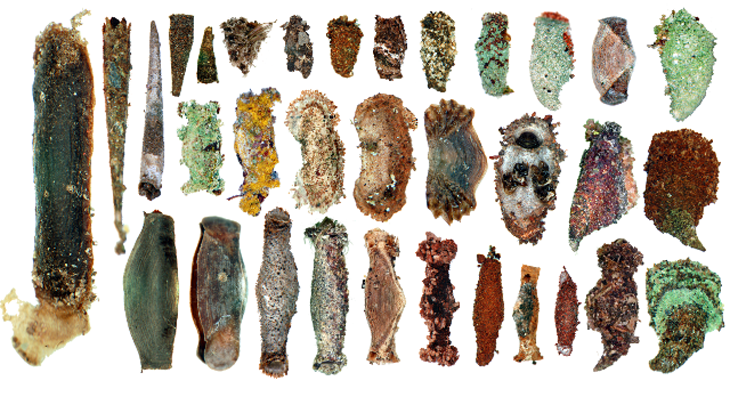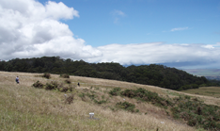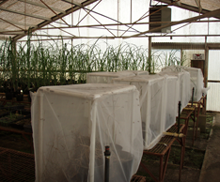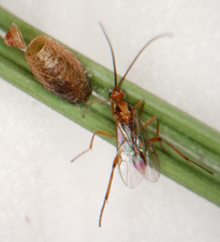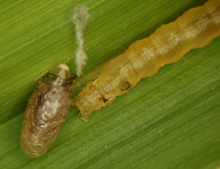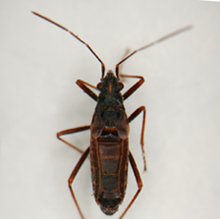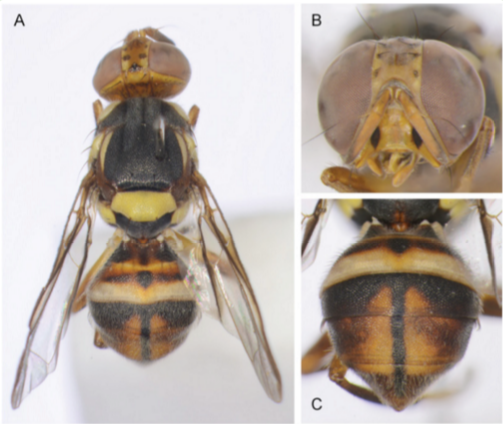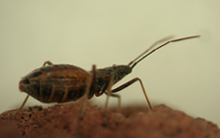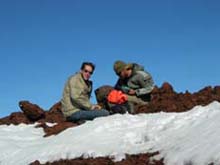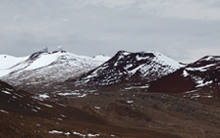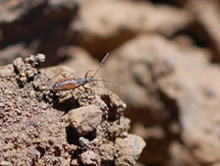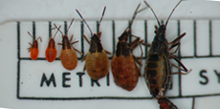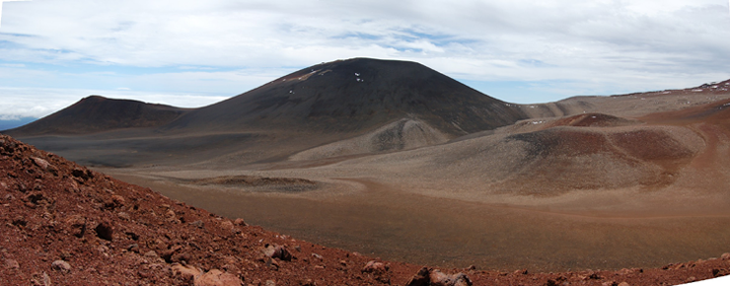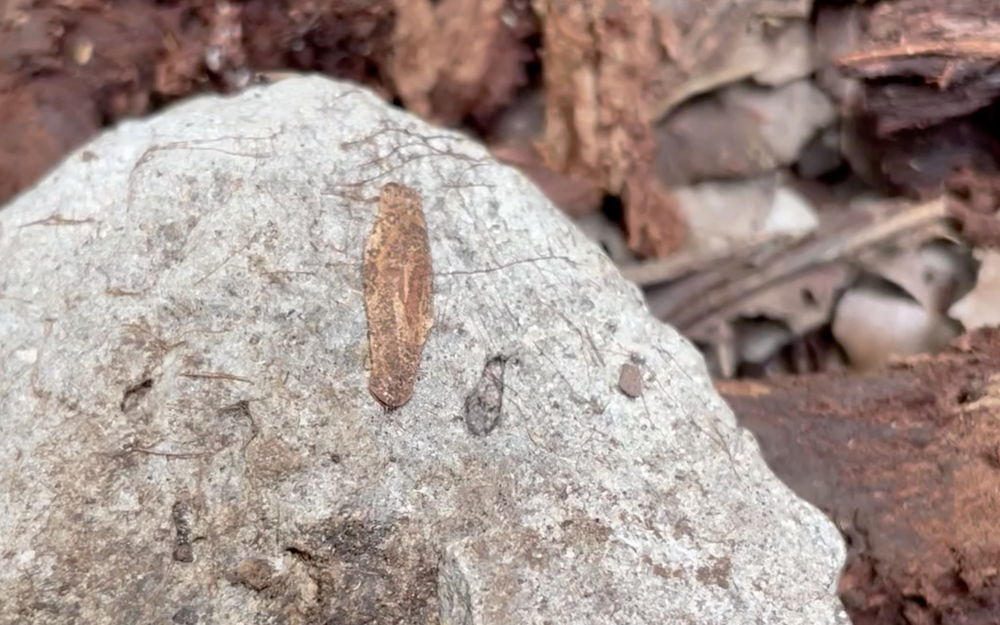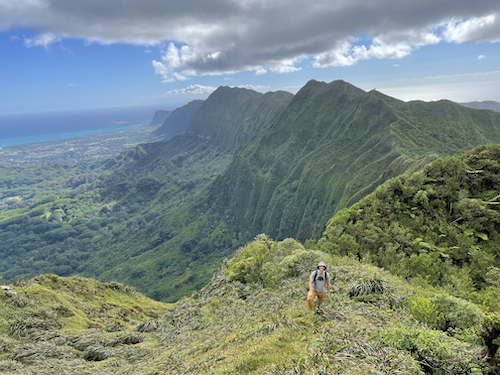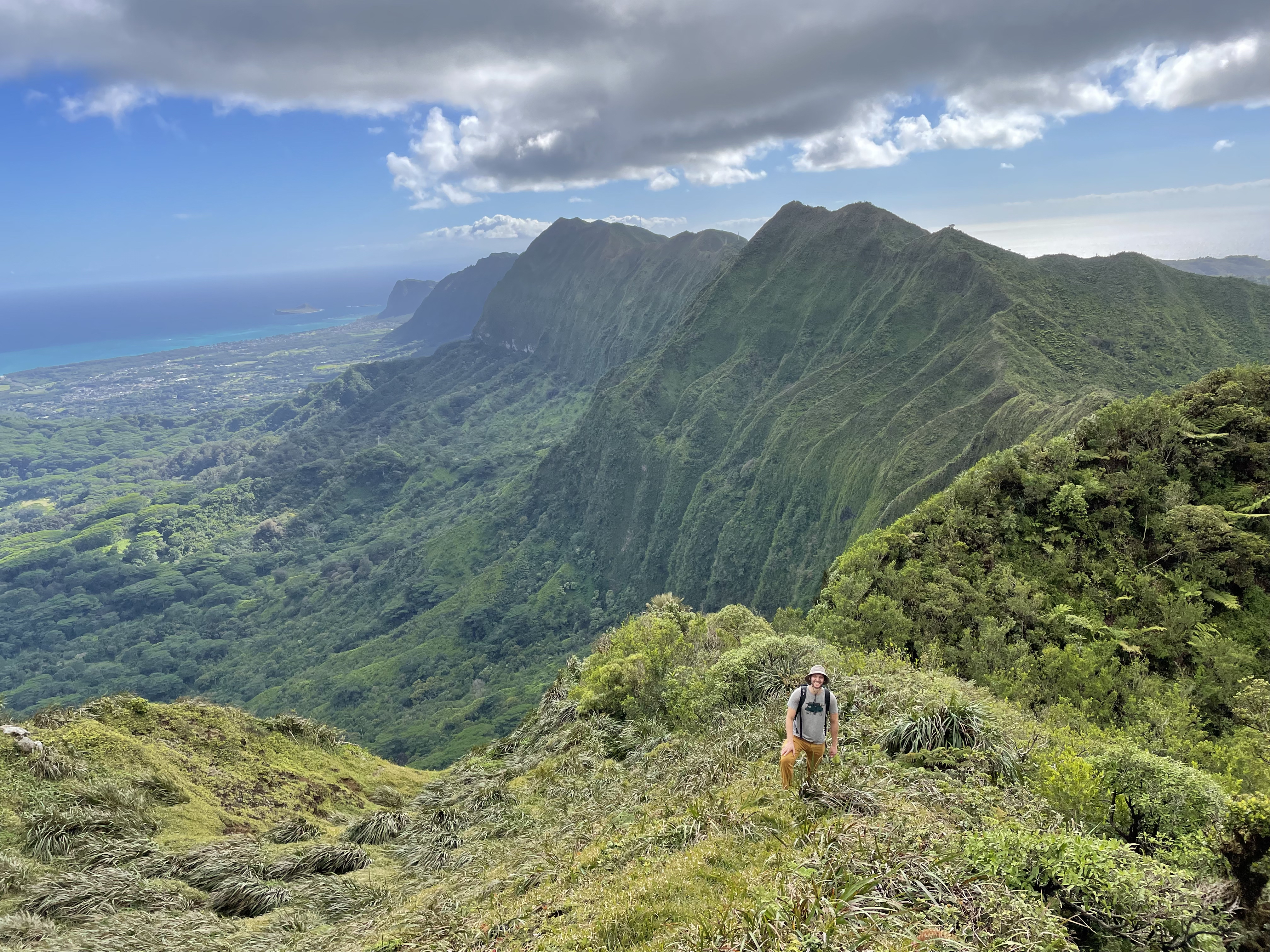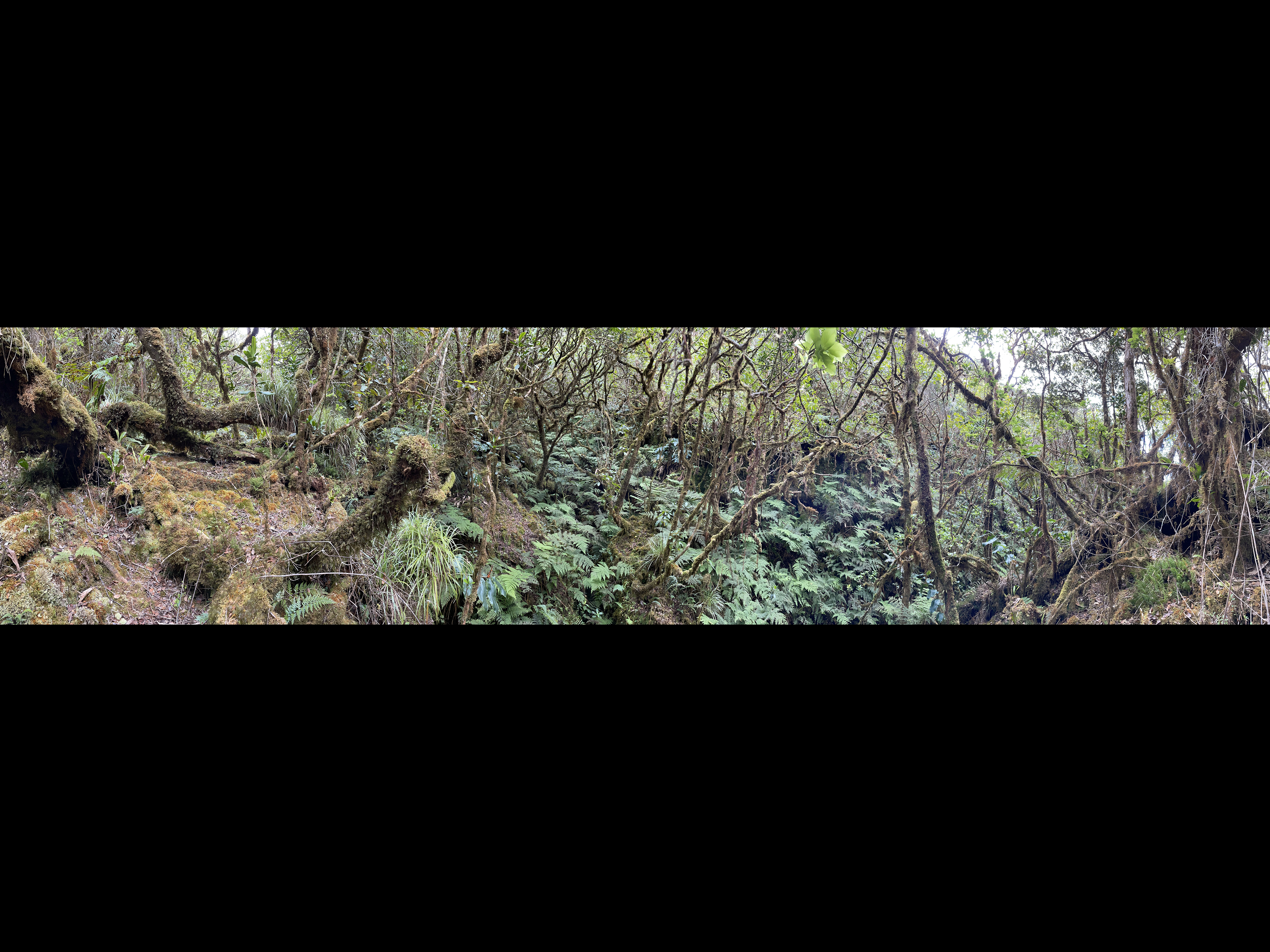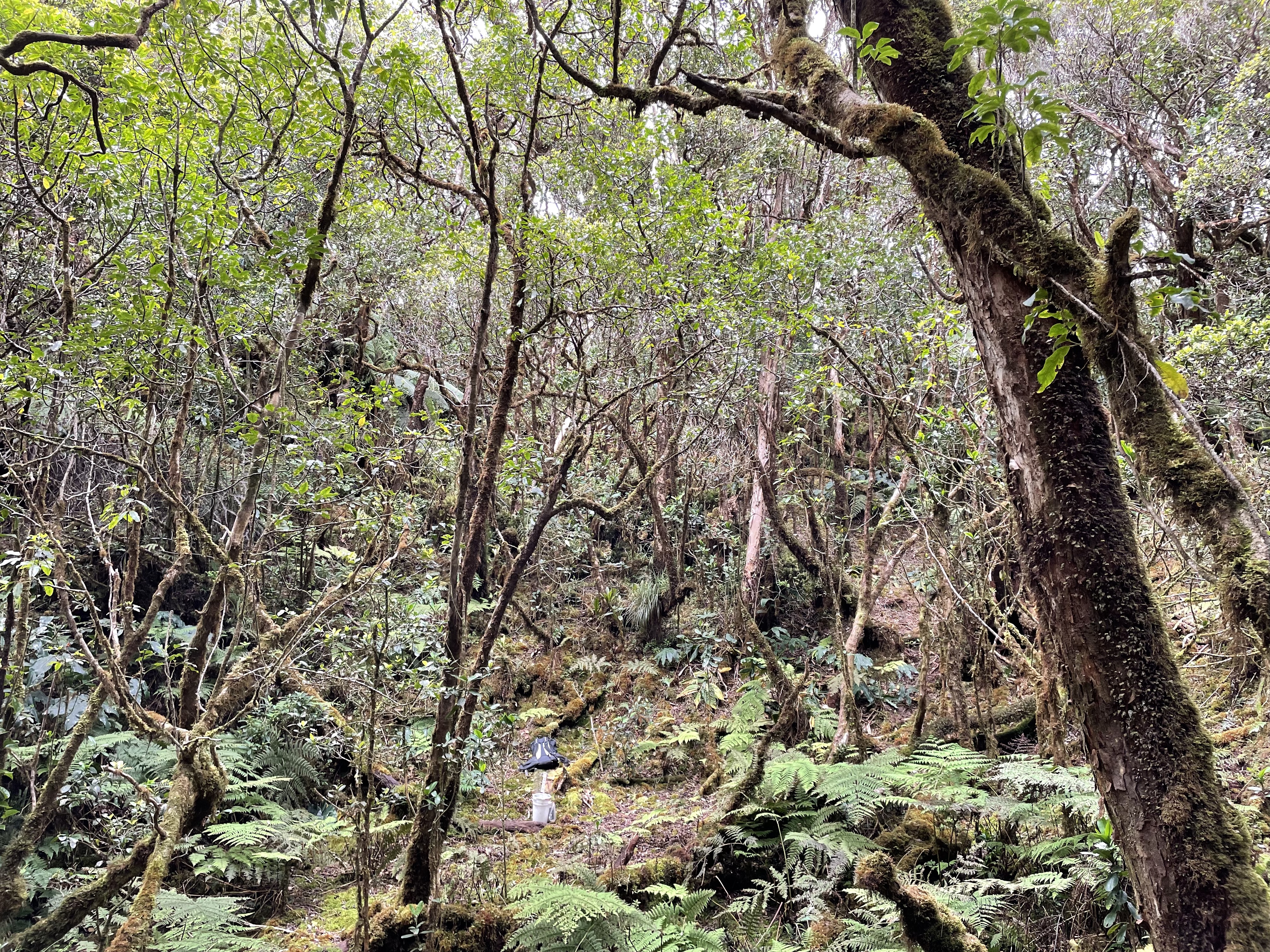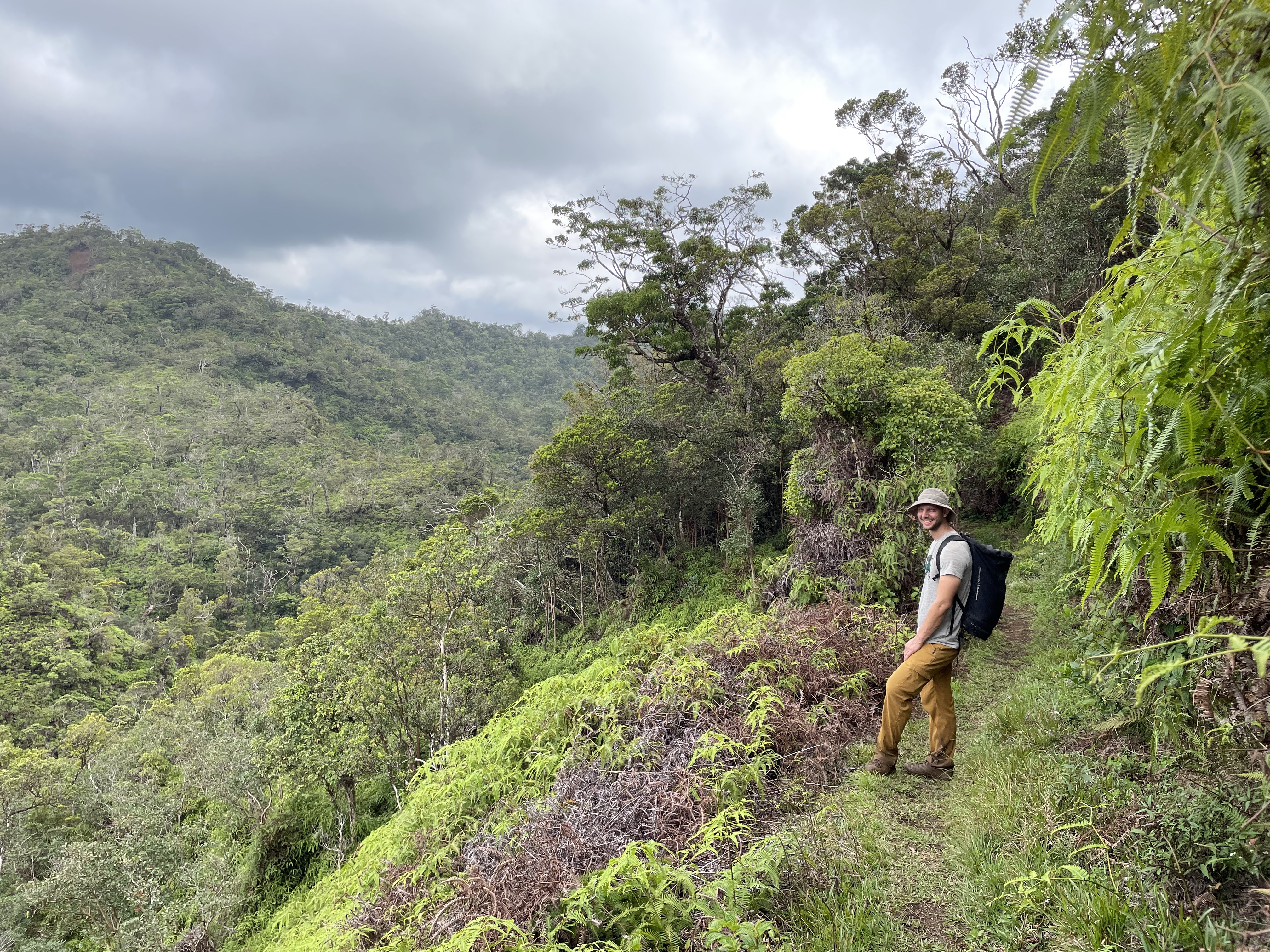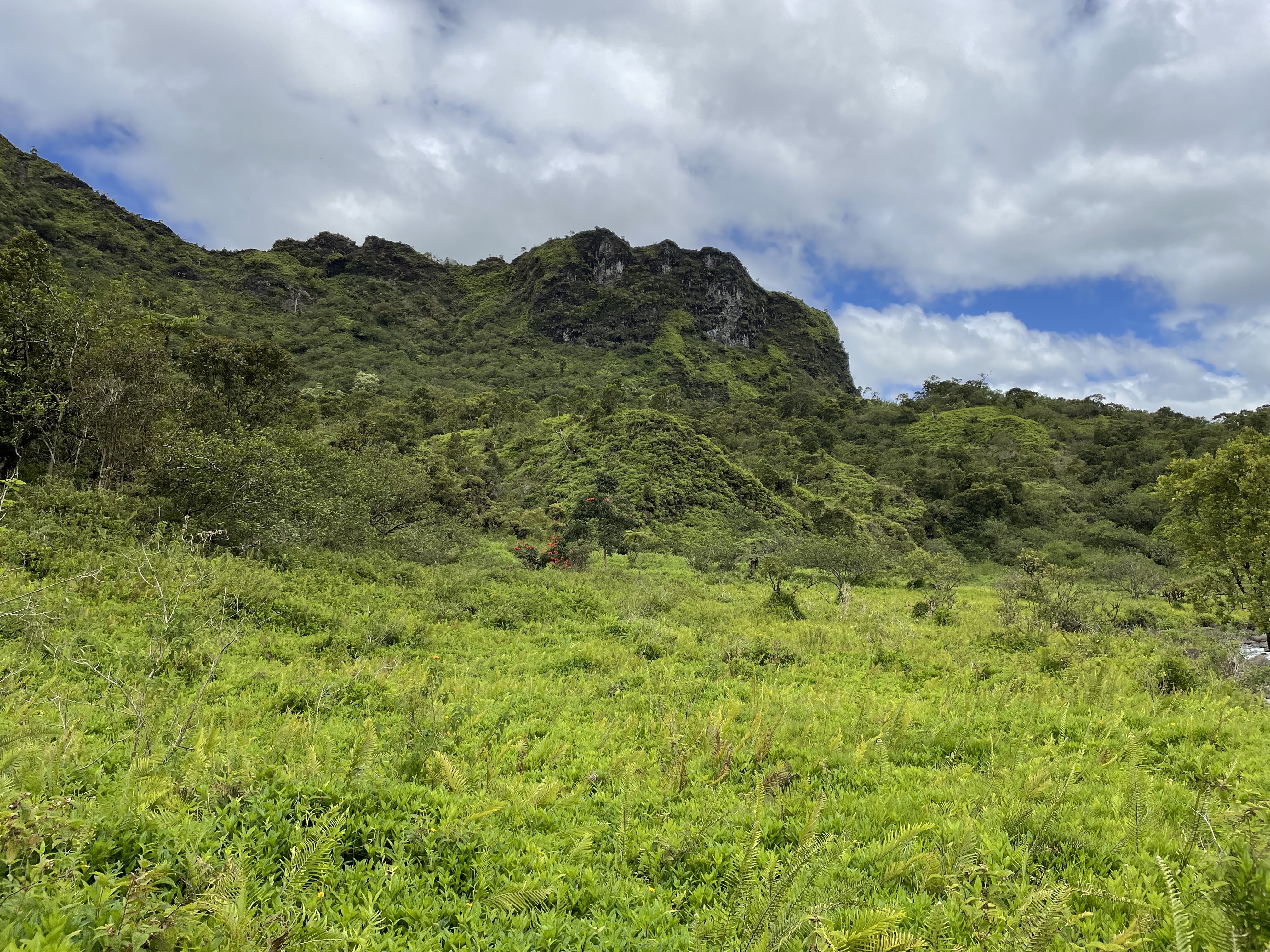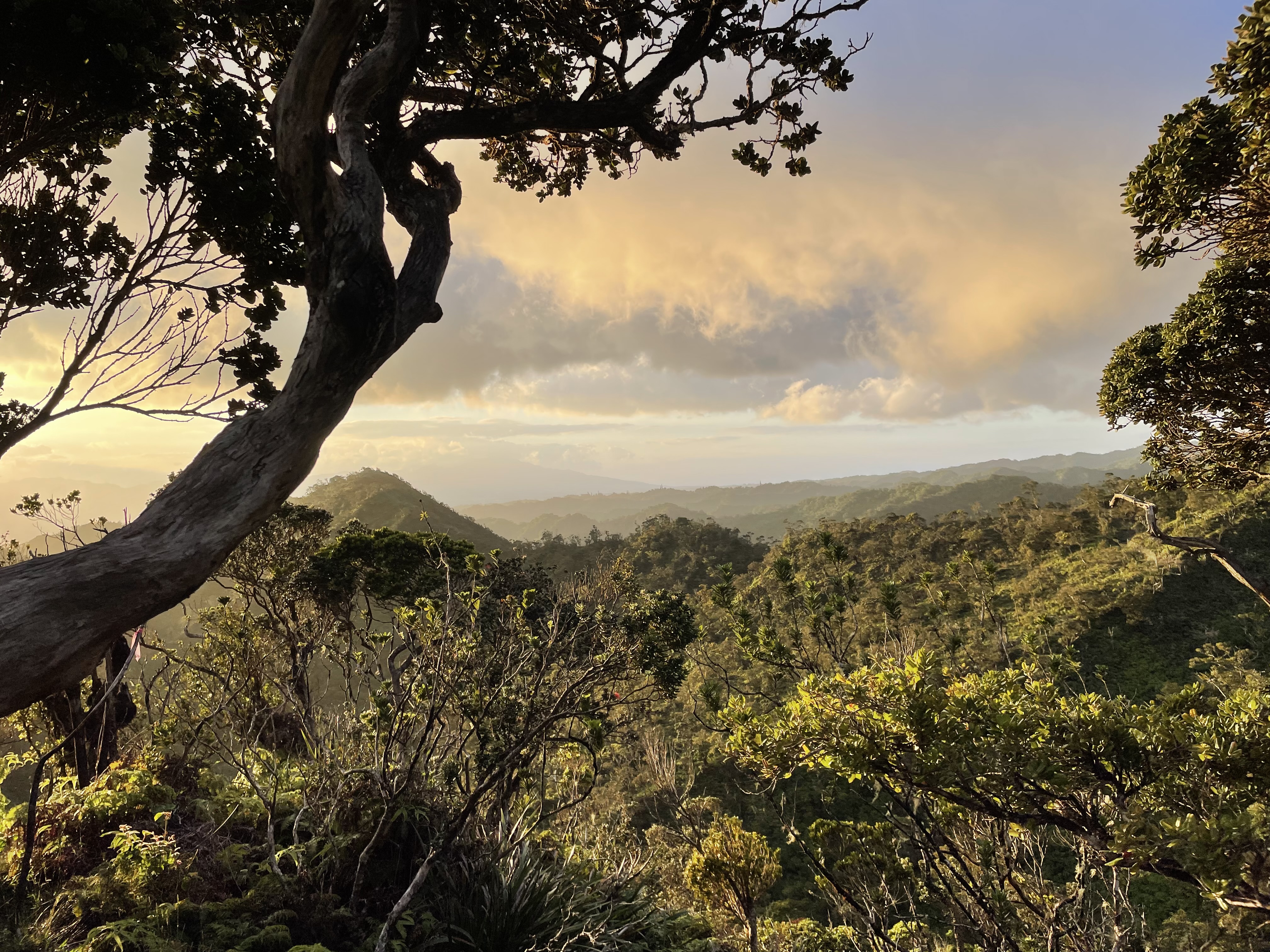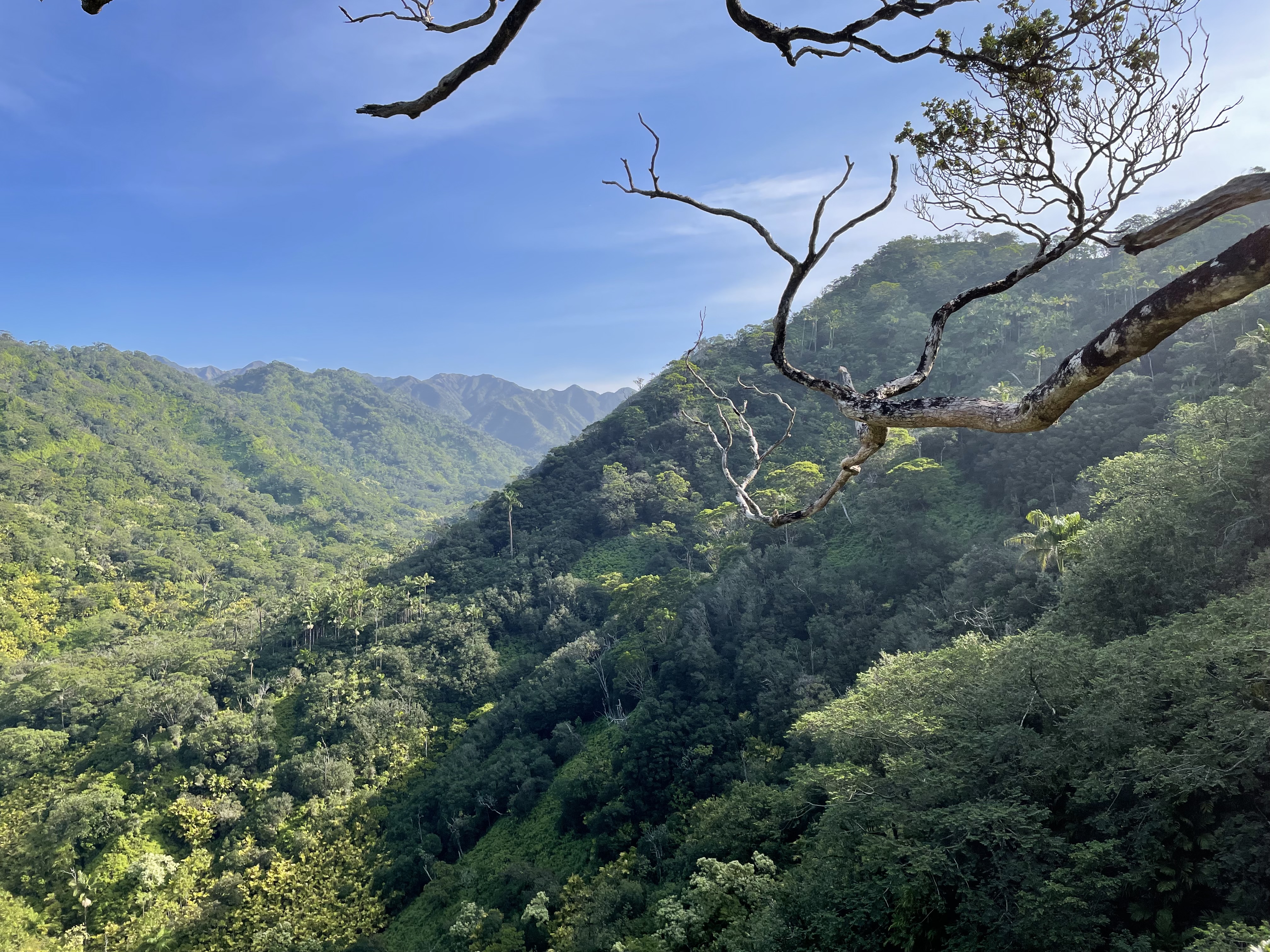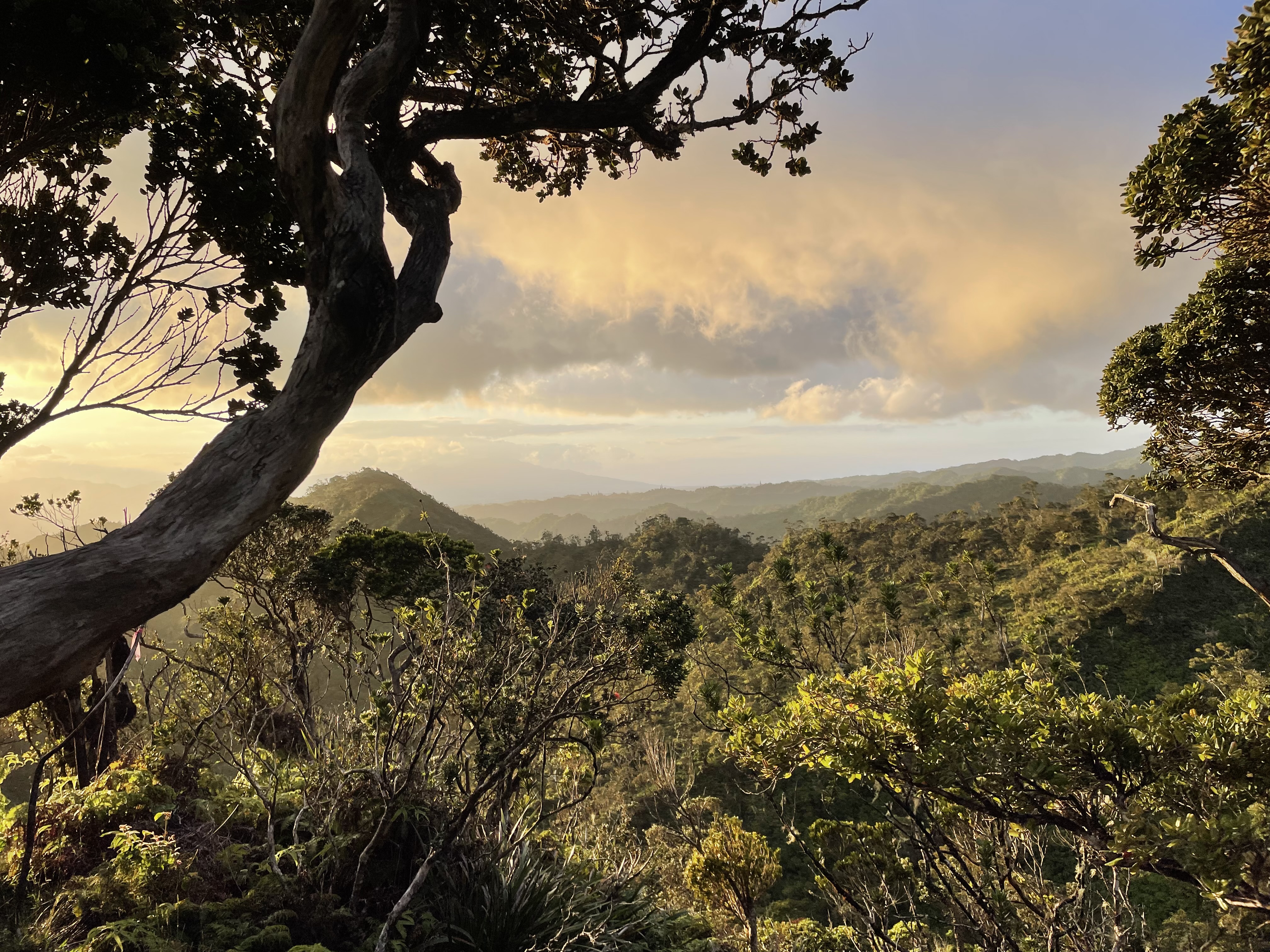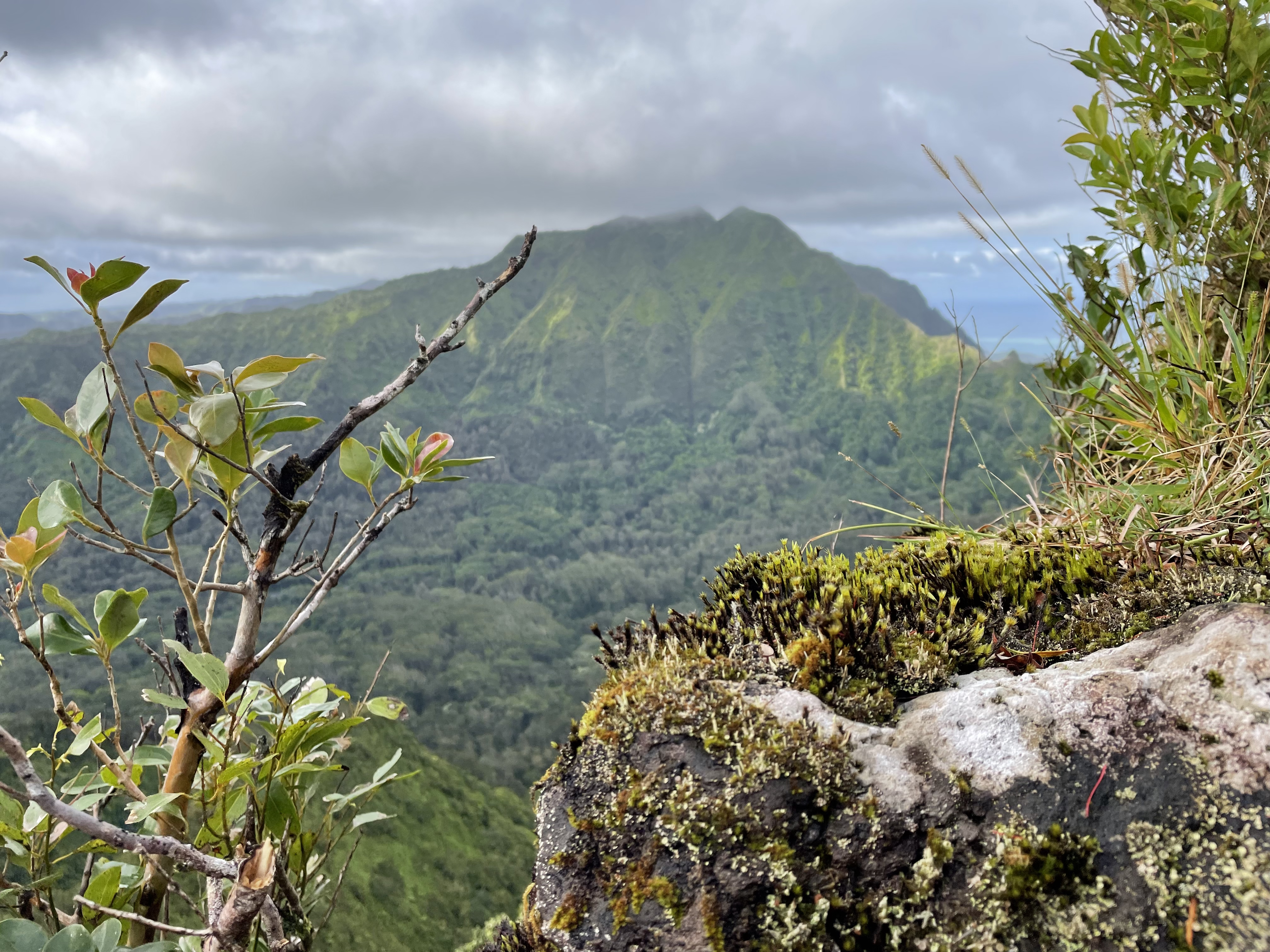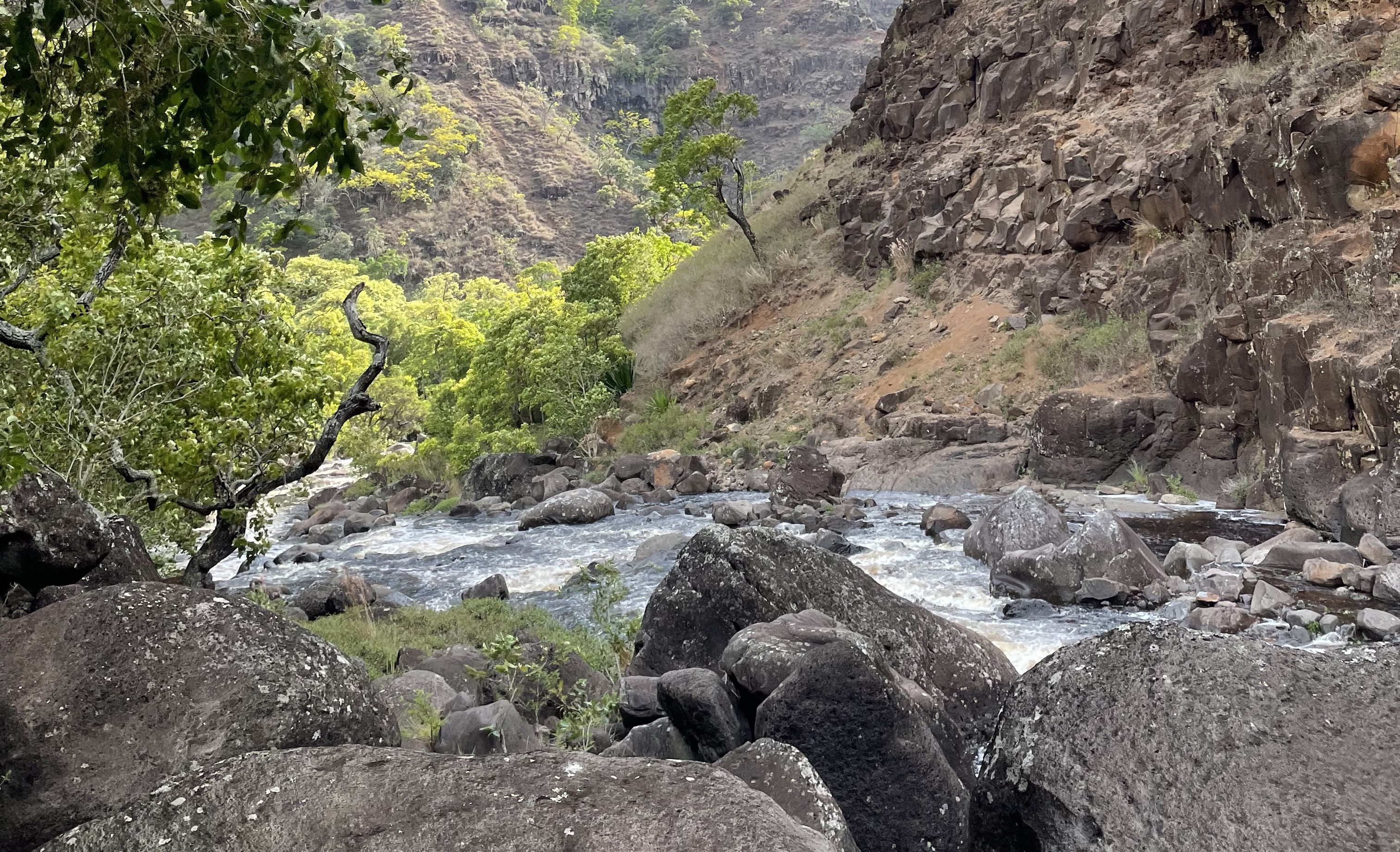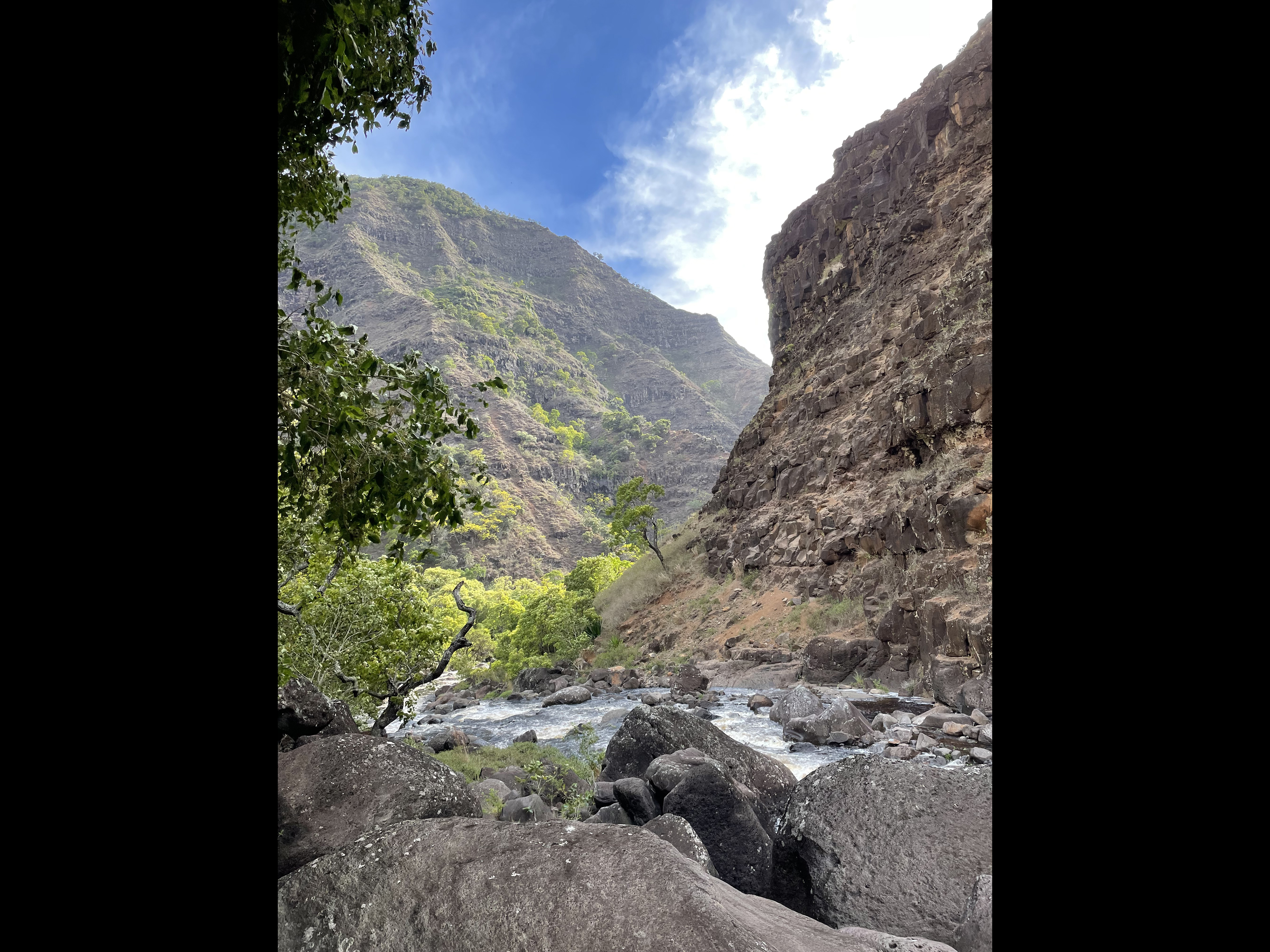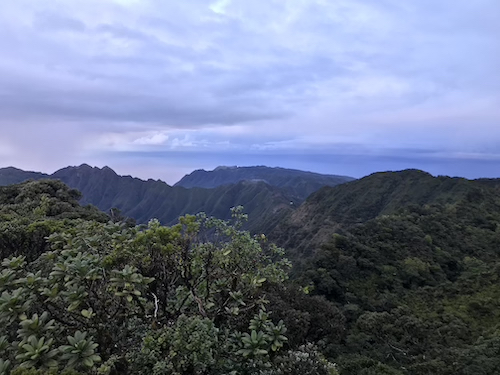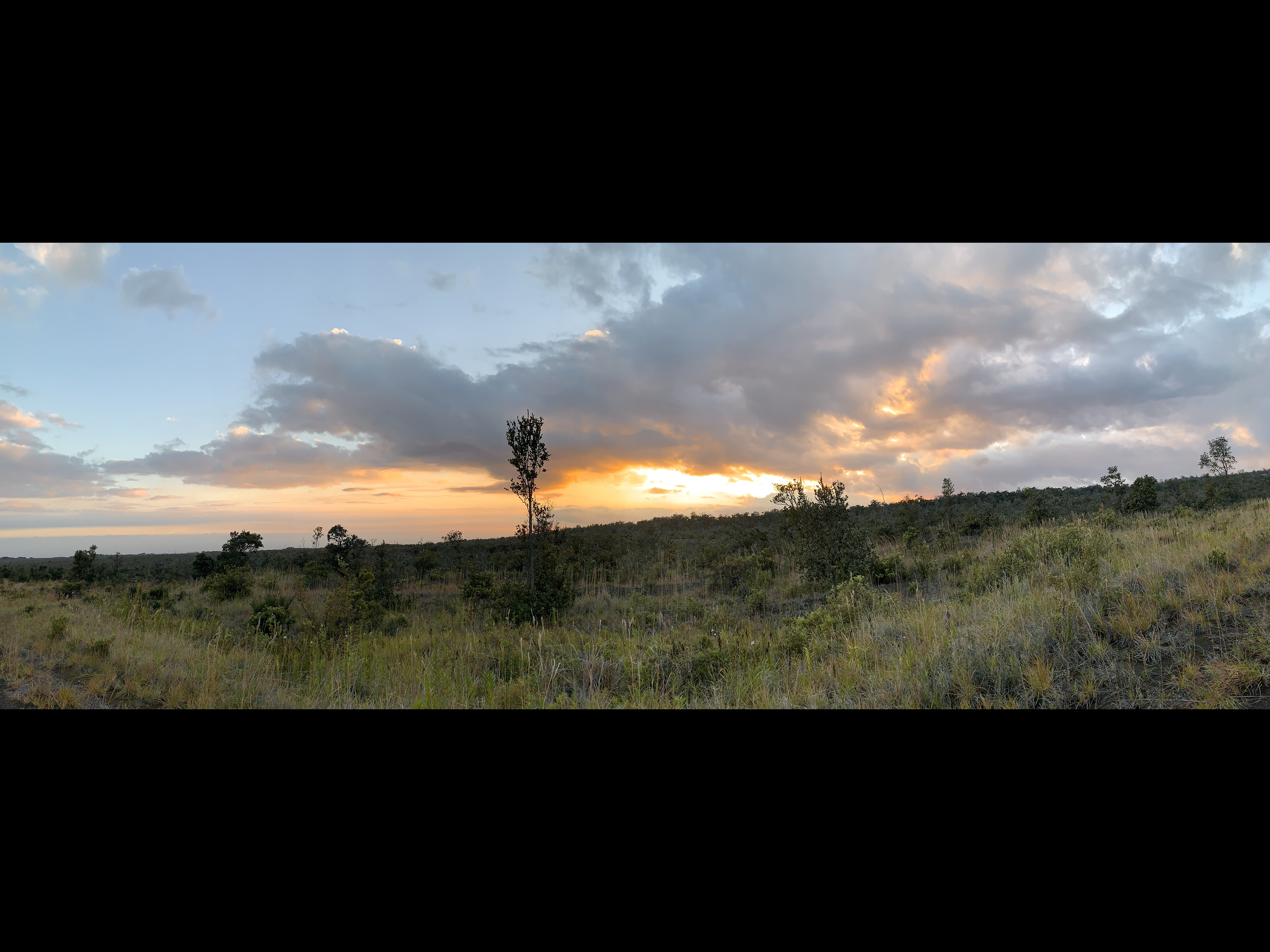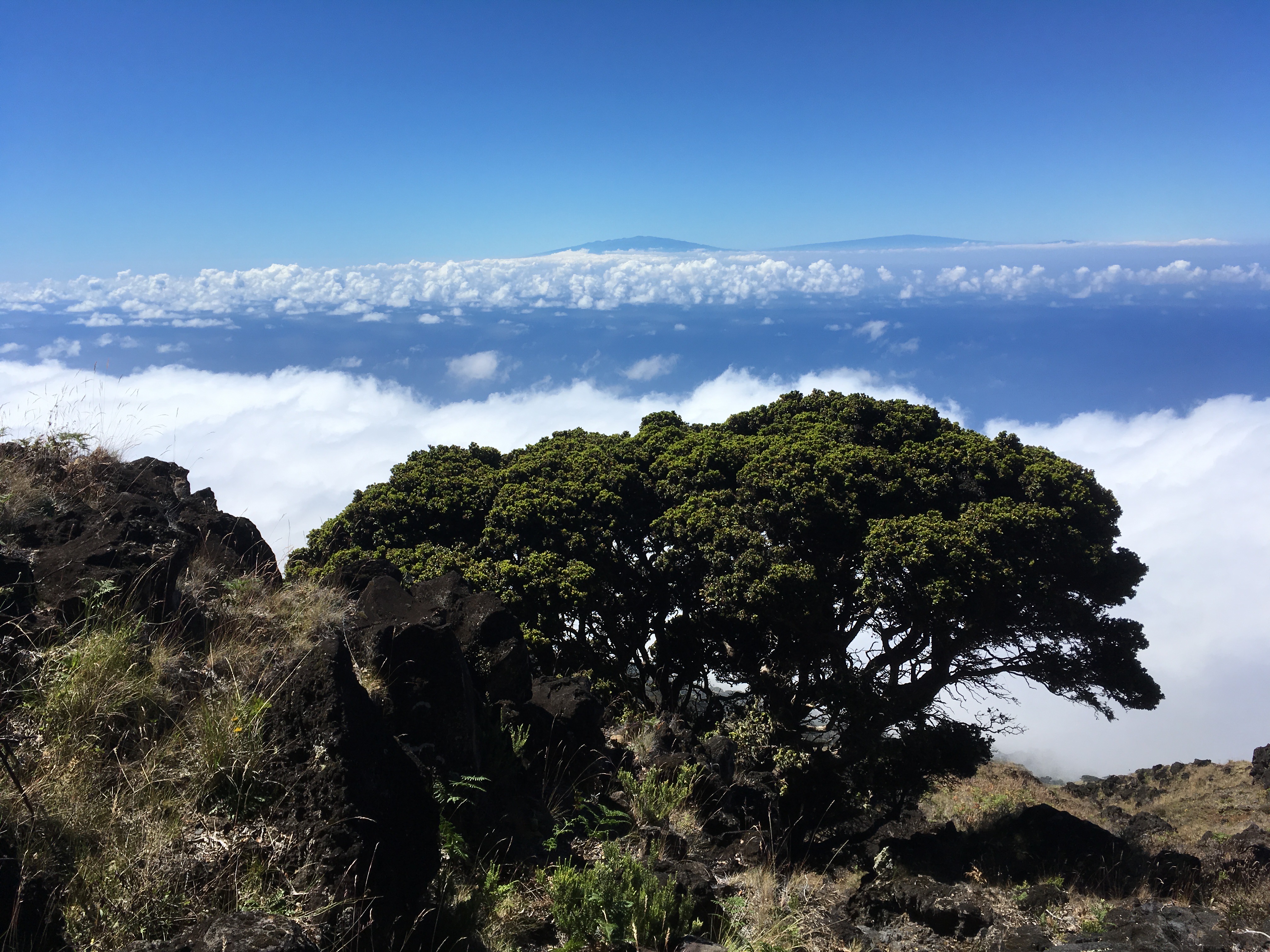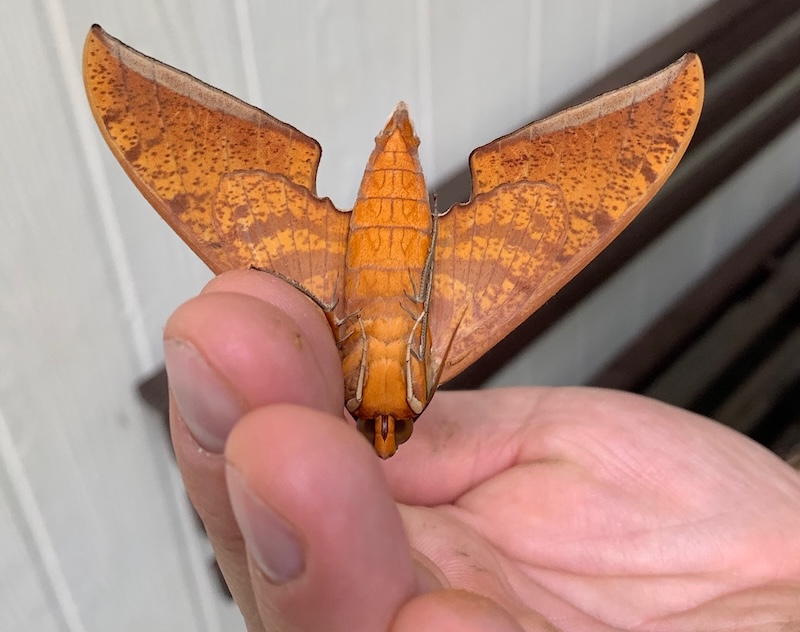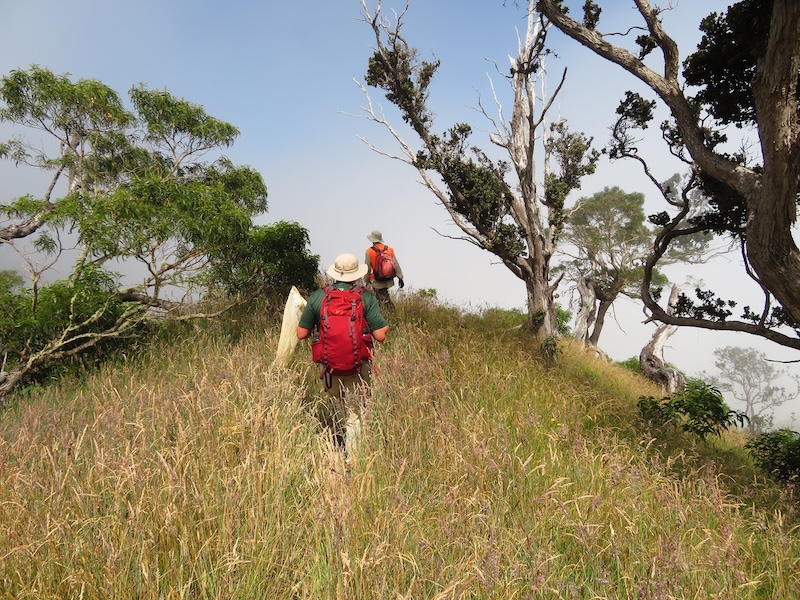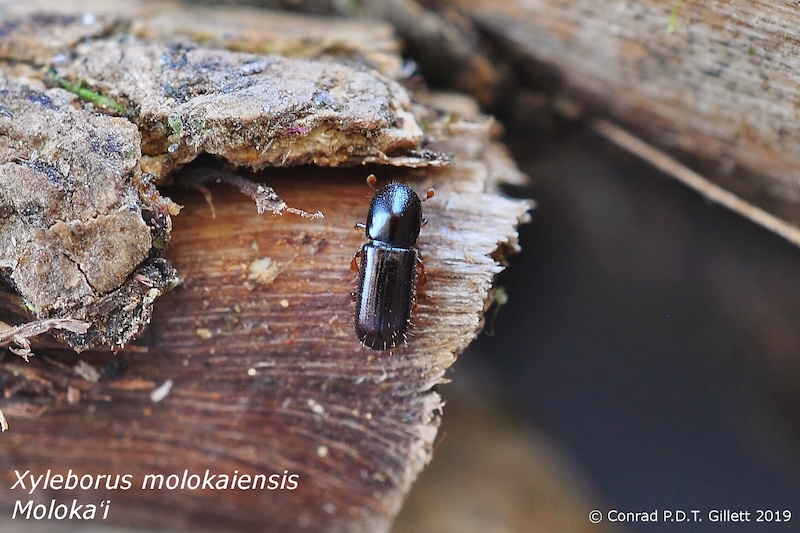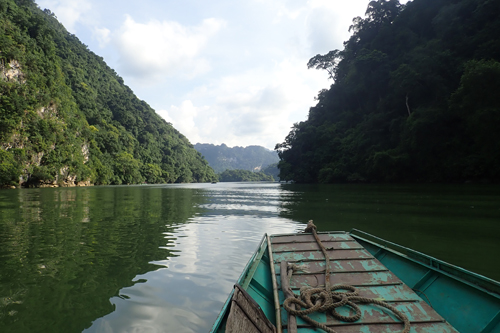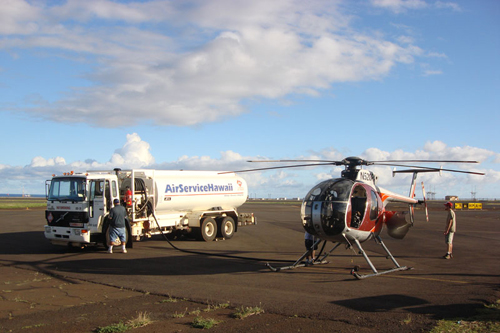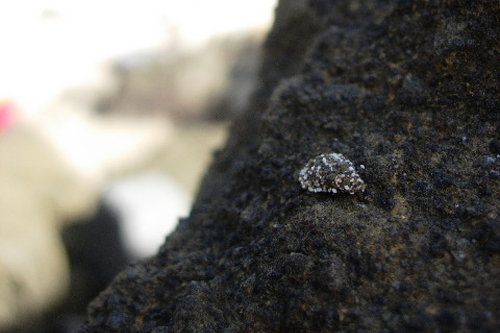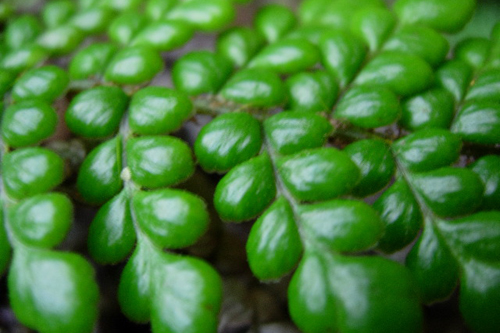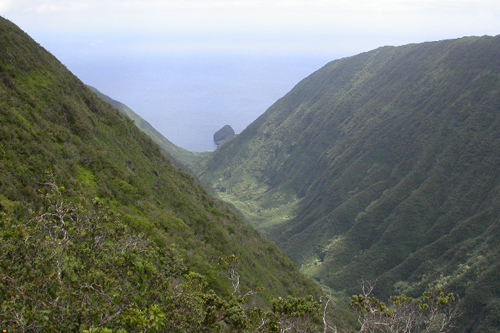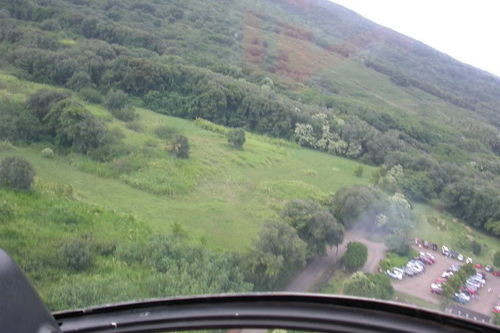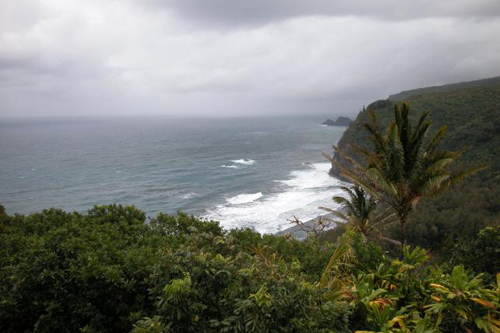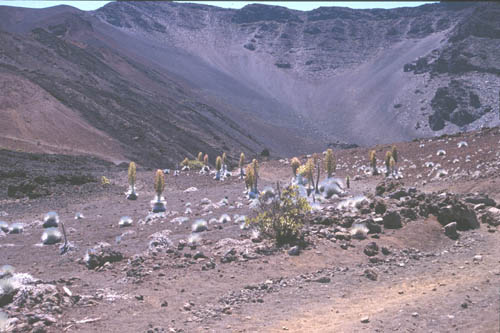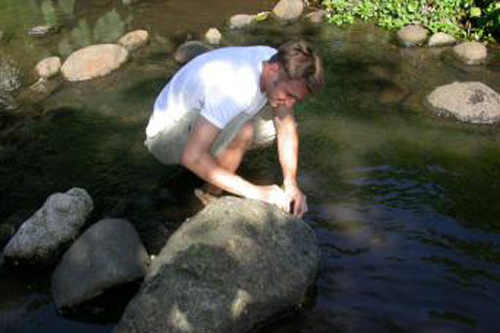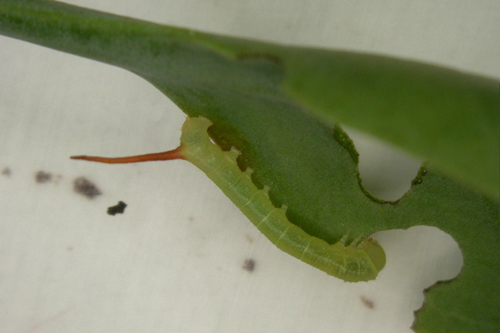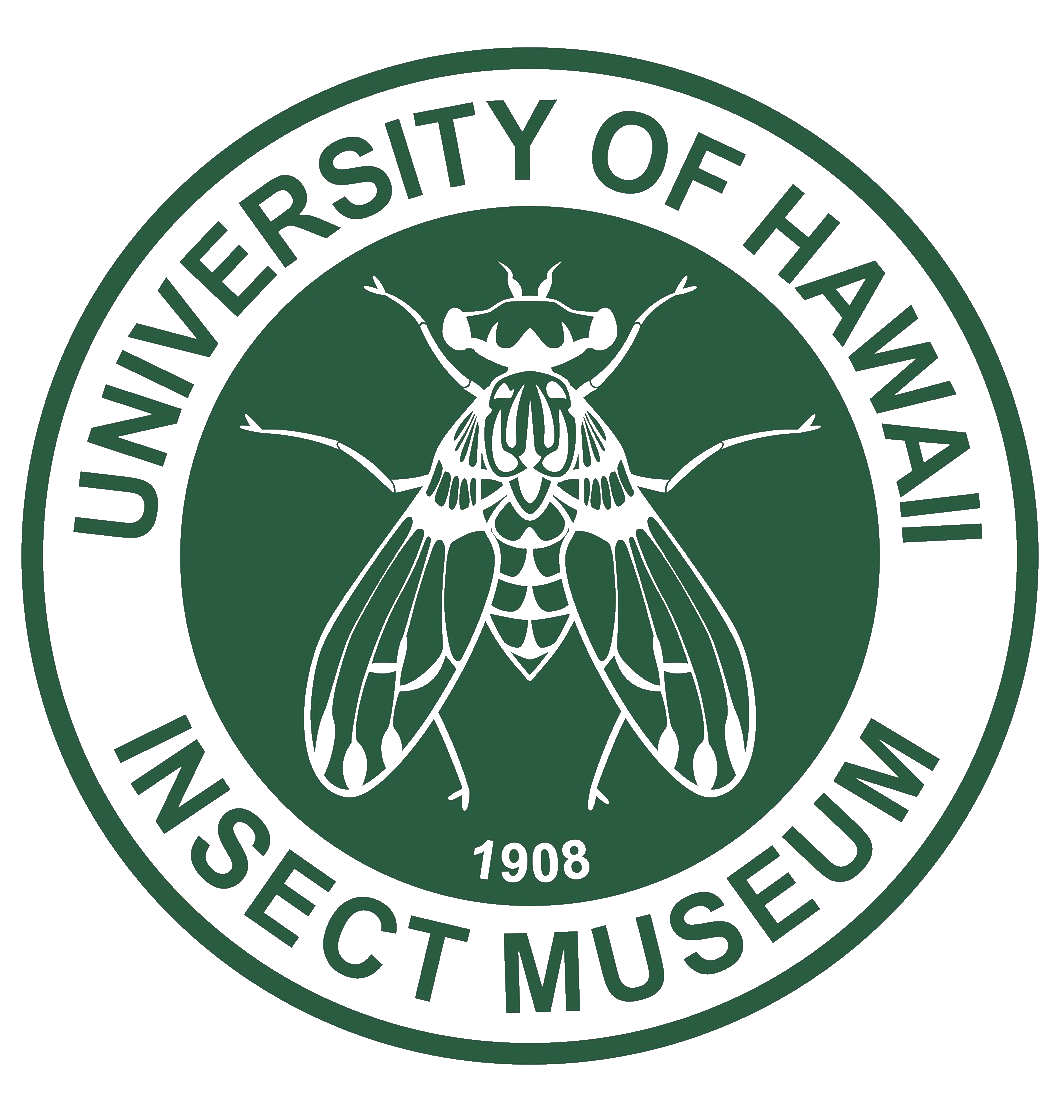The main purpose of this project was to assess environmental risks
of using fruit fly (Tephritidae) attractants for their control
or eradication in the Hawaiian environment. More specific focus
was on the use of male lures (cue-lure, methyl eugenol) and
female synthetic food attractants (BioLure, torula yeast and
solulys).
Study Sites
Traps baited with female attractants
and male lures were setup in native, mixed native and non-native
forests, farmlands, orchards and residential areas. Traps were
maintained for 10-24 weeks and emptied weekly at 35 sites on
Hawaii Island (2005) (Figure 1) and 46 sites on Maui (2006)
(Figure 2). Trap catches were compared against catches from
unbaited control traps. On Hawaii island, 9 sites formed a
20 km transect along the Stainback Highway (138-1,045 m above
sea level), 15 sites were maintained in a 35 km transect along
the Saddle Road (439-2,012 m), 6 sites were along the upper
Hamakua Ditch Trail in wet native forest (North Kohala Forest
Reserve) (906-1,019 m), and 5 sites were in the agricultural
community of Waimea (744-872 m). On Maui, we maintained 14
sets of traps in 9 sites in the Kula agricultural community
(517-1,138 m), primarily in persimmon and coffee orchards and
their adjacent non-native forests, and 37 sites in mostly endemic
forest on the northern slope of Haleakala Mountain (1,184-1,583
m) in the Makawao, Waikamoi and Koolau Forest reserves.
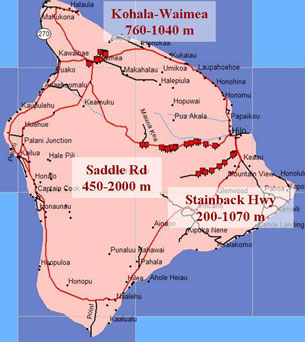
Fig 1: Trapping sites on Hawaii island
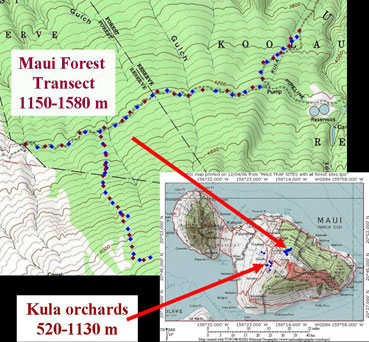
Fig 2: Trapping sites on Maui island
Attraction to male Lures
Male lures, combined with insecticides, are commonly used
in traps to monitor male Bactrocera fruit fly populations
and detect incursion of exotic species. They also constitute
a powerful tool for fruit fly suppression and eradication through
male annihilation. The large-scale use of male lures for control
and eradication has raised concern of possible nontarget impacts
on insects other than fruit flies, especially beneficial species
and the numerous endemic Hawaiian insects.
Past attempts in Hawaii to characterize the range of nontargets
attracted to male lures, by comparing captures in lure-baited
traps with unbaited control traps, have resulted in an impressive
list of 36 insect species, in 16 families of Diptera, Coleoptera,
Hemiptera and Hymenoptera, assumed to be attracted to methyl
eugenol. Among them were 11 species of endemic Hawaiian Drosophilidae
(Figures 3 to 7), a very diverse group with 559 described species,
of which 12 are recognized as endangered by the US Fish and
Wildlife. However, at least 26 of these purportedly lure-attracted
species are scavengers, and authors cautioned that some of
them may have been actually secondarily attracted to decaying
fruit flies that could not be excluded from entering male lure
traps.
 |
 |
 |
 |
 |
| Fig 3 |
Fig 4 |
Fig 5 |
Fig 6 |
Fig 7 |
| Figures
3 to 7: Various representatives of endemic Hawaiian Drosophilidae |
Our study aimed to further investigate
male lure nontarget effects by carefully discriminating between
actual attraction to male lures and secondary attraction to
decaying insects. Trapping was carried out across a broad range
of environments, including intact native forest, mixed native/invasive
forest, invasive forest, agricultural and residential areas.
Bucket traps
made from drinking cups and baited with cue-lure or methyl
eugenol (ME) (Scentry lure plugs) were maintained and emptied
weekly at every trapping sites on Hawaii and Maui islands.
To control for the possible attraction to dead insects, bucket
traps artificially baited with decaying oriental fruit flies
were maintained at all sites, except in the Maui endemic
forest. Unbaited bucket traps were also maintained at all
sites to control for the random entry of insects into traps.
Vapor tape and a 20% solution of propylene glycol were included
in all traps to kill and preserve trapped insects, respectively.
In addition to the bucket traps, MultiLure traps charged
with the 3-component BioLure food attractant and, in Maui
forest, bucket traps baited with fermented mushroom, were
maintained to ensure that the apparent lack of attraction
to male lures is not due to the absence of potential nontarget
species at trapping sites.
Traps with male lures and decaying flies captured 401 recognized
arthropod species, in 17 orders and 93 families, dominated
by Diptera (94.9% of all captures, 248 species), primarily
in the families Drosophilidae, Phoridae and Milichiidae.
Cue-lure did not significantly attract any nontarget insects, and melon flies were usually not numerous enough in traps to cause secondary attract scavengers. These results are fully consistent with conclusions from previous studies.
Seven nontarget species in five insect orders were significantly
attracted to ME-baited traps, regardless of the presence or
absence of decaying fruit flies. Five of these are closely
associated with flowers, feeding on pollen or nectar. Honeybees
(Apis mellifera L.) (Apidae) and the flower fly Allograpta
obliqua (Say) (Syrphidae) were attracted in rather small
numbers (0.04-0.09 per trap per day). Honeybee attraction to
ME in Hawaii was previously documented in literature, and orchid
bees (Apidae: Euglossinae) are similarly drawn to ME in South
America. Two endemic species of Crambid moths [Mestolobes
minuscula (Butler) (Figure 8) and Orthomecyna exigua (Butler)
(Figure 9)] were also attracted to ME in Kula (Maui) orchards.
Although endemic, these two species are common on Maui in non-native
habitats at lower altitude. The introduced sap beetle Carpophilus
marginellus Motsch. (Nitidulidae), a common flower visitor
that contributes to fruit tree pollination in Japan, is attracted
to decaying fruit flies, but also to ME in traps. The attraction
of flower insects is no surprise, since ME or some of its related
compounds have been detected in the flower blossoms of a diversity
of plant families.
Although our traps captured limited numbers of green lacewings
(Chrysopidae), they were previously reported as attracted to
ME in Hawaii, the Philippines, and Taiwan. Adult chrysopids,
depending on species, feed either on live insects, or on flower
pollen and nectar and honeydew from Hemiptera. At least of
two of the three species attracted to ME are flower feeders,
strongly suggesting an attraction to ME as emulation of floral
compounds, further supported by the lacewing attraction to
the natural flower fragrance compound eugenol in Malaysian
rainforest.
The endemic plant bug Orthotylus coprosmae Polhemus
(Hemiptera: Miridae) (Figure 10) is attracted to ME in Maui
endemic forests, consistent with previous ME attraction records
of three other endemic mirids on Kauai. At least one of these
feeds on a host plant known to contain ME. A similar plant
kairomone relationship may also explain published records of
endemic anobiid beetles attraction to ME traps on Kauai.
Methyl eugenol attracts females of the
endemic fungus gnat Bradysia setigera (Hardy) (Sciaridae)
(Figure 11). Conspecific males and other common sciarids are
not attracted. In this case it likely acts as a pheromone analogue
rather than a kairomone.
 |
 |
 |
 |
| Fig 8 |
Fig 9 |
Fig 10 |
Fig 11 |
| Figures
8 to 11: Endemic Hawaiian nontarget insects attracted
to methyl eugenol |
At least 56 species in 21 families of Diptera, Hymenoptera
and Coleoptera were significantly drawn to decaying fruit flies
rather than male lure. They were abundant in traps with decaying
flies, and were collected in ME traps only when enough dead
trapped flies had accumulated. We demonstrated that 8 of the
36 species previously reported as attracted to ME are actually
drawn to dead flies, and that most other species belonged to
families attracted to decaying flies, rather than ME, most
commonly the Drosophilidae, Phoridae, Chloropidae, Lonchaeidae,
Milichiidae, Neriidae, Otitidae, Psychodidae, Sphaeroceridae,
Calliphoridae, Muscidae, and Sarcophagidae. Most species in
these families are indeed scavengers. Aside from the ME-attracted C.
marginellus, other endemic and introduced Nitidulidae
were attracted only to decaying flies.
Drosophilidae were the most numerous and diverse nontargets
attracted to decaying flies at all sites. Our results confirm
or strongly support that most or all of the 11 endemic and
5 introduced drosophilids reported in literature as ME-attracted
were actually attracted to dead flies. Nearly half (143 of
306) of the drosophilids expected to occur at the trapping
sites were collected using BioLure and mushroom bait traps,
but not in male lure traps. Invaluable data was generated on
drosophilid distribution in endemic and disturbed ecosystems
in Hawaii. It is an unforeseen extra benefit from this research
project that is the focus of a publication soon to be submitted
to an invertebrate conservation-oriented journal. Fragrant
leaves of Cheirodendron trigynum (Gaud.) Heller (Araliaceae),
the most common larval host species for endemic drosophilids,
were demonstrated through Solid Phase Microextraction (SPME)
analysis not to contain ME.
A few species of predators and
parasitoids were attracted to decaying flies. Almost all are
associated with decaying matter (Staphylinidae) or parasitoids
of houseflies (Encyrtidae, Braconidae, Pteromalidae).
Precautionary
suggestions are provided to minimize the undesirable
nontarget impact of the use of ME for control or eradication
on flower-associated insects, endemic plant bugs and
fungus gnats and scavenger insects. Flower insects were
attracted in small numbers (0.03-0.15 per trap per day)
in our study, consistent with previously published data,
suggesting that attraction is likely to be short-ranged,
and can be further minimized if a ME trap or dispenser
is hung to a tree past its flowering stage. This was
confirmed by the much lower honeybee and moth captures
in non-flowering persimmon trees that in adjacent
flowering coffee
trees in Kula. A comparison of captures of endemic saprophagous
insects in decaying fly and BioLure traps in orchards and backyards,
native forest and ecotone forest adjacent (< 100 m) to native
forest shows that very small numbers of a few endemic species
are captured in non-native sites.
 |
| Fig 12: Endemic Hawaiian viviparous
blowflies (Dyscritomyia) |
This is not the
case in endemic forest and its adjacent ecotones, where
a broad diversity of endemic drosophilids and calliphorids
(the larviparous Dyscritomyia) (Figure 12) are
trapped. Based on studies of range of dispersal of 14 common
North American Drosophilid species by Donald McInnis (USDA-ARS),
who estimated their maximal dispersal distance to be 300
meters at most, we concluded that using traps at least
300 meters from native forest will minimize possible nontarget
effects, if dead target flies accumulate inside traps.
Attraction to BioLure
The dry food lure BioLure in the MultiLure trap (Figure 13)
was developed as an alternative to the traditionally used liquid
protein lures in glass McPhail traps (Figure 14) by identifying
and using the individual volatiles from the bacterial breakdown
of protein hydrolysate that were most attractive to fruit flies.
The 3-component BioLure, used in our study, is composed of
ammonium acetate, trimethylamine hydrochloride and putrescine.
Although originally developed as a monitoring tool, BioLure
has become a common tool to control the Mediterranean fruit
fly [Ceratitis capitata (Wiedemann)], through mass-trapping,
in fruit tree orchards in Spain and Israel. In Hawaii it is
used, in combination with protein bait sprays, to suppress C.
capitata in Maui orchards.
Nontarget attraction to BioLure, mainly saprophagous Diptera,
has been reported in literature, but not studied systematically
in a diversity of habitats. We have therefore investigated
nontarget attraction to BioLure across a range of endemic and
agricultural habitats in Hawaii, compared nontarget attraction
of the individual BioLure components, and determined whether
the omission of the putrescine ingredient results in decreased
nontarget catches without reducing captures of target C.
capitata.
MultiLure traps baited with 3-component
BioLure, as well as unbaited controls, were maintained continuously,
or intermittently in endemic forest, at every trapping site on
Hawaii and Maui islands. A solution of 20% propylene glycol was
added to each trap to preserve and facilitate identification
of captured insects. Trap contents was emptied weekly. These
traps served the dual purpose of characterizing nontarget attraction
to BioLure and confirming the presence of nontargets that may
potentially be attracted to the male lure traps also present
at each site. Additionally, three sites were selected, one in
endemic forest and two in orchards, to study fruit fly and nontarget
attraction to the separated individual components of BioLure.
A third trap, with only two components, was also maintained at
each site in Kula (Maui), to determine if the omission of the
putrescine ingredient results in a decrease in nontarget captures
without compromising captures of C. capitata.
Captures in BioLure traps were numerically dominated by Diptera
(94.3%). The endemic forest site samples were dominated by
endemic and introduced Drosophilidae and endemic Calliphoridae,
while most of the captured nontargets in the nonnative sites
were of introduced species. The majority of nontarget species
belonged to families whose larvae are scavengers on decaying
plant or animal matter (Drosophilidae, Chloropidae, Lonchaeidae,
Neriidae, Otitidae, Phoridae, Anthomyiidae, Calliphoridae,
Muscidae, Sarcophagidae and Nitidulidae). These same families
and species of were also strongly attracted to the bucket traps
baited with decaying fruit flies.
BioLure attracted few beneficial predators or parasitoids,
except for a few parasitoids of house flies and moderate numbers
of tachinids flies. Pollinators were not attracted to BioLure.
Although it attracted very few green lacewings (Chrysopidae),
there is literature evidence that protein hydrolysate and BioLure
can attract the pollen and nectar-feeding species.
A comparison of attraction to the components in separate traps
and the three components together inside a trap in a randomized
block design has shown that ammonium acetate or, to a lesser
extent, putrescine, are the main components attractive to nontargets,
depending on the species. It was also demonstrated, as is the
case for target fruit flies, that the three components act
in synergy, attracting larger numbers of nontargets together
in a trap than in three traps baited with the separate components.
The elimination of the putrescine ingredient from BioLure
traps resulted in significant capture reduction for five nontarget
species and an overall 20% reduction in the number of nontargets
attracted, with no reduction in target C. capitata captures.
I can therefore be omitted from BioLure when used for Mediterranean
fruit fly monitoring or control in Hawaii.
Publications
Leblanc, L., Rubinoff, D., and R.I. Vargas. 2009.
Attraction of nontarget species to fruit fly (Diptera: Tephritidae)
male lures and decaying fruit flies in Hawaii. Environ. Entomol.
38: 1446-1461.
Leblanc, L., O’Grady, P.M., Rubinoff, D., and
S.L. Montgomery. 2009. New immigrant Drosophilidae
in Hawaii, and a checklist of the established immigrant species.
Proceedings of the Hawaiian Entomological Society. 41: 121-127.
Leblanc, L., Vargas, R.I.,
and D. Rubinoff. 2010. Attraction
of Ceratitis capitata (Diptera: Tephritidae) and
endemic and introduced nontarget insects to BioLure bait
and its individual components in Hawaii.
Environ. Entomol. IN PRESS.
Leblanc, L., Vargas, R.I.,
and D. Rubinoff. 2010. A comparison of nontarget
attraction to BioLure and liquid protein food lures in Hawaii.
IN PREPARATION.
Vargas, R.I.,
Shelly, T.E., Leblanc, L. and J.C. Piñero. 2010. Recent
advances in methyl eugenol and cue-lure technologies for
fruit fly detection, monitoring, and control. Vitamins and
Hormones. Section: Pheromones, vol. 83. Academic Press. SUBMITTED.
There
are four species of pest fruit flies (Tephritidae)
in Hawai'i. All are invasive, and most of them are from tropical
Asia.
For more information on fruit fly diversity and management, consult
the Pacific Fruit Fly Website and
the Hawaii Area-Wide Fruit
Fly Pest management Program site.
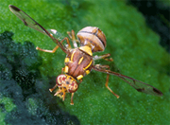
Melon Fly (Bactrocera
cucurbitae) was the first pest fruit fly detected in Hawai'i
in 1895. Its larvae breed on cultivated and wild Cucurbitaceae,
as well as papaya.
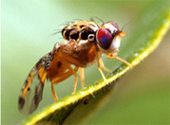
Mediterranean
Fruit Fly (Ceratitis
capitata) has been the dominant polyphagous fruit pest
since from its discovery in 1907, until the introduction
of Oriental fruit fly.
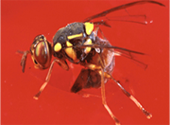
Oriental Fruit Fly (Bactrocera
dorsalis) was detected in Hawai'i in 1945, and has become
the main fruit pest of edible and wild fruits in Hawai'i. Following
its introduction, it has displaced the Mediterranean fly to become
the dominant species, limiting the Mediterranean fly to attack
coffee and fruit at higher elevations.
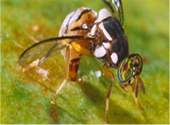
Malaysian fruit fly (Bactrocera
latifrons) is the most recent migrant, known in Hawai'i
since 1983. Its host range is restricted to cultivated and wild
solanaceous plants. It is not a serious crop pest.
Photos are courtesy of Jari Sugano (University
of Hawai'i at Manoa)
